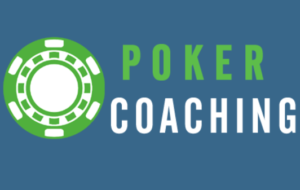







Playing a Marginal Made Hand with a Drawby Jonathan Little | Published: Oct 08, '18 |
I was recently told about a dicey situation from a $1/$2 game that you should strive to avoid while playing. A loose, weak player with $80 limped from middle position and our Hero found Jd-7d in the cutoff with a $200 stack. Hero decided to raise to $10.
Hero told me that he thought he could outplay the limper, winning most pots where the limper missed while sidestepping difficult situations where Hero happens to flop well but is still behind. While this may be true, as stacks start to get shallow ($80 is only 40 big blinds), you should mostly raise limpers with strong big cards and hands that have a lot of potential to make strong postflop hands, like Tc-9c. Jh-7h is simply too weak to justify raising. Hero should fold and wait for a better spot. An added bonus of playing only reasonable hands (besides making better postflop hands) is that your raises over limpers will tend to elicit most folds compared to when you frequently raise. If you are mindlessly aggressive, even the most obtuse opponents will eventually figure out your strategy.
As expected, the limper called. The flop came Jc-6d-2d. The opponent checked and Hero bet $10 into the $23 pot.
I like this bet size, although given the board is quite uncoordinated, Hero could bet even smaller, perhaps $8. Hero should have a reasonable range advantage and given Hero is not concerned about getting outdrawn, his main priority should be building a pot while also keeping the opponent in. As Hero bets larger, his opponent will be more inclined to fold marginal pairs and Ace-high, which are the exact hands Hero wants action from.
The opponent called. The turn was the (Jc-6d-2d)-6s. The opponent (with $60 remaining in his stack) checked and Hero bet $40 into the $43 pot.
This is where Hero really messed up. It is important to understand that the opponent should have many more 6s in his range than Hero, meaning the opponent now has more premium made hands in his range than Hero. Also, when Hero bets large, the opponent may only continue with Queens and better, all of which beat Hero. When you have a marginal made hand and a draw, the marginal made hand strength is the overriding factor in how you play your hand (because you will usually miss your draw), meaning you should play as if you have a marginal made hand, not a draw. If Hero did not have a flush draw, he should check behind or bet tiny. Instead, when Hero bets large, the opponent will play almost perfectly, which is a disaster for Hero.
If you check behind on the turn and the opponent bets the river, you can easily call. If the opponent checks, you can then consider making a value bet.
The opponent thought for a while before folding 9-9 face-up. Like I said, what a disaster!
 Thank you for taking the time to read this blog post. If you enjoyed it, please share it with your friends. If you want to continue working on your poker skills, be sure to sign up for your free 7-day trial to my interactive training site, PokerCoaching.com.
Thank you for taking the time to read this blog post. If you enjoyed it, please share it with your friends. If you want to continue working on your poker skills, be sure to sign up for your free 7-day trial to my interactive training site, PokerCoaching.com.
Be sure to check back next week for another educational blog post. Thanks for reading!